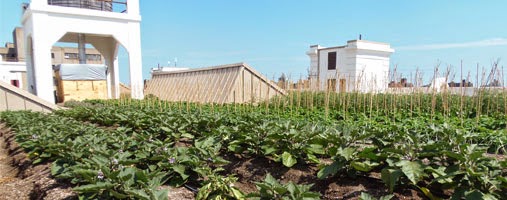Hi' Tips to Improve Indoor Air Quality;


Indoor air pollution is considered as one of the top environmental risks to public health worldwide due to increasing number of building-related illnesses.
Studies have found that concentration of indoor pollutants is significantly higher indoors than they are in outdoor environment, which is two to five times and sometimes hundred times higher than outdoor levels.
As most of the people spend 80% to 90% of their lives indoor, indoor air quality has significant implication on sustainability.
Decreased indoor air quality can affect quality of life of the building occupant, increase health risks and increase the liability for building owner, decrease the productivity of occupants and reduce the resale value of the building. Poor indoor air quality can cause “sick building syndrome”, which is a medical condition linked to poor health and absenteeism.
Poor indoor air quality is due to many factors including but not limited to improper building design, inadequate ventilation, off-gassing of volatile organic compounds (VOCs) from furniture, carpets, paints and coatings, cleaning products, and from human respiration. Airborne particles such as lints, dust, dust mites, mold, bacteria, pollen and animal dander also contribute to poor indoor air quality. Indicators that are used to measure the indoor air quality include total particulate matter, total volatile organic compounds (TVOCs), formaldehyde, carbon dioxide (CO2), carbon monoxide (CO), ozone (O3), air temperature, relative humidity (RH). Concentration of CO2 in the indoor environment indicates whether ventilation is sufficient or not.
.jpg)
.jpg)
In the Middle East region, most of the people live in enclosed air-conditioned indoor environments. With rapidly growing population, increase in number of vehicles on the road, high temperature level, ever increasing construction activities, regular sandstorm, concentration of air contaminants in the region is among the highest worldwide. Indoor environment also reflects outdoor air quality and pollution. Transport of outdoor contaminants to the indoor environment can result in occupant exposure to outdoor pollutants that have serious health impacts. In addition, there are many sources of indoor pollutants present in building materials, cleaning products, indoor mold and legionella growth, and emission from interior furnishings, finishing and equipments.
Tips to Improve Indoor Air Quality;
.jpg)
.jpg)
Indoor air quality is influenced by concentration of outdoor air pollutants as well as indoor source of pollution, characteristic of building and habits of occupants. Appropriate building design and mechanical system and control strategies as well as changing occupant behaviour can improve indoor air quality and health and comfort, performance and productivity of building occupants. There are a host of strategies to improve the indoor air quality.
Appropriate design;
.jpg)
.jpg)
Building envelop, orientation, and location of air intake, location of mechanical ventilation systems can contribute to indoor air quality. Hence, these factors should be considered during the design stage of projects to control the main source of pollutants for the whole building.
Whole house mechanical ventilation;
.jpg)
.jpg)
Properly designed and sized ventilation system can supply adequate outdoor air to indoor. In most of the green building rating systems, industry standards such as ASHRAE Standard 62 or Ventilation for Acceptable Indoor Air Quality are commonly followed.
Mixed mode ventilation:
.jpg)
.jpg)
Use of combination of mechanical and natural ventilation systems in buildings, such as automated window controlling systems and operable windows, can help in maintaining healthy indoor air quality.
Air quality management during construction:
.jpg)
.jpg)
During the construction phase, molds can develop due to exposure of building materials with moisture. Dust and particulates can easily accumulate on building materials if they are not protected. The air quality during the construction period can be protected by protecting the building materials from dust and particles and moistures.
High efficiency air filters:
.jpg)
.jpg)
Filters prevent transports of outdoor VOCs, dusts, particulates and ozone indoors. Use of good particle filter such as high MERV rated filters in ventilation equipment are found to be the most effective filters in filtering outdoor dust and particulates out.
Maintenance schedule for HVAC filters:
.jpg)
.jpg)
Dirty filter can cause sensory irritation. Hence, appropriate maintenance schedule can prevent this to happen.
Use of low emitting materials:
.jpg)
.jpg)
Use of materials that have low VOC content for products such as indoor carpets, rubber flooring, sub-floor materials, ceramics and ties, plasterboards, or other sealants and adhesives. Also internal construction materials with low formaldehyde content can be helpful.
Conduct building flush out:
.jpg)
.jpg)
Flushing out of indoor contaminants thoroughly in buildings before occupancy will help replacing dirty indoor air with fresh outdoor air.
Green cleaning program:
.jpg)
.jpg)
Select cleaning materials that are made of low emitting materials and employ a green cleaning program to reduce contaminant exposure.
Carbon dioxide monitors: Install CO2 monitors in ventilation system and integrate them to regulate the supply of fresh air according to the building occupants demand. By doing so, if the CO2 concentration increases beyond a set point, then the airflow automatically increases.
Sustainable Cities.

.jpg)



.gif)


